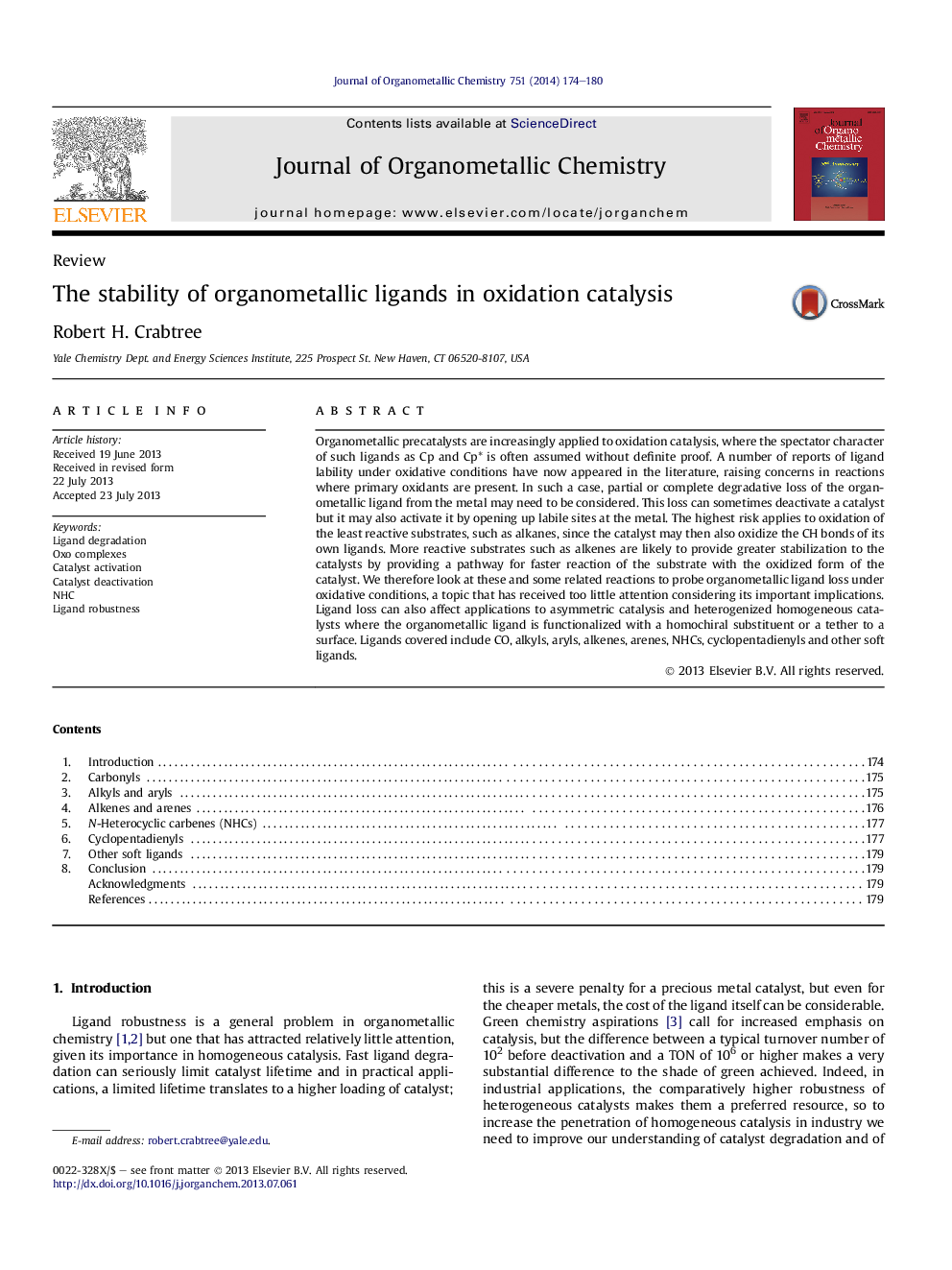| Article ID | Journal | Published Year | Pages | File Type |
|---|---|---|---|---|
| 1324271 | Journal of Organometallic Chemistry | 2014 | 7 Pages |
•M–C bond stability under oxidative conditions.•Relevance to catalytic oxidation chemistry.•Important for proper mechanistic understanding.
Organometallic precatalysts are increasingly applied to oxidation catalysis, where the spectator character of such ligands as Cp and Cp* is often assumed without definite proof. A number of reports of ligand lability under oxidative conditions have now appeared in the literature, raising concerns in reactions where primary oxidants are present. In such a case, partial or complete degradative loss of the organometallic ligand from the metal may need to be considered. This loss can sometimes deactivate a catalyst but it may also activate it by opening up labile sites at the metal. The highest risk applies to oxidation of the least reactive substrates, such as alkanes, since the catalyst may then also oxidize the CH bonds of its own ligands. More reactive substrates such as alkenes are likely to provide greater stabilization to the catalysts by providing a pathway for faster reaction of the substrate with the oxidized form of the catalyst. We therefore look at these and some related reactions to probe organometallic ligand loss under oxidative conditions, a topic that has received too little attention considering its important implications. Ligand loss can also affect applications to asymmetric catalysis and heterogenized homogeneous catalysts where the organometallic ligand is functionalized with a homochiral substituent or a tether to a surface. Ligands covered include CO, alkyls, aryls, alkenes, arenes, NHCs, cyclopentadienyls and other soft ligands.
Graphical abstractThe stability of M–C bonds in organometallic ligands under oxidative conditions is probed in the context of catalysis.Figure optionsDownload full-size imageDownload as PowerPoint slide
